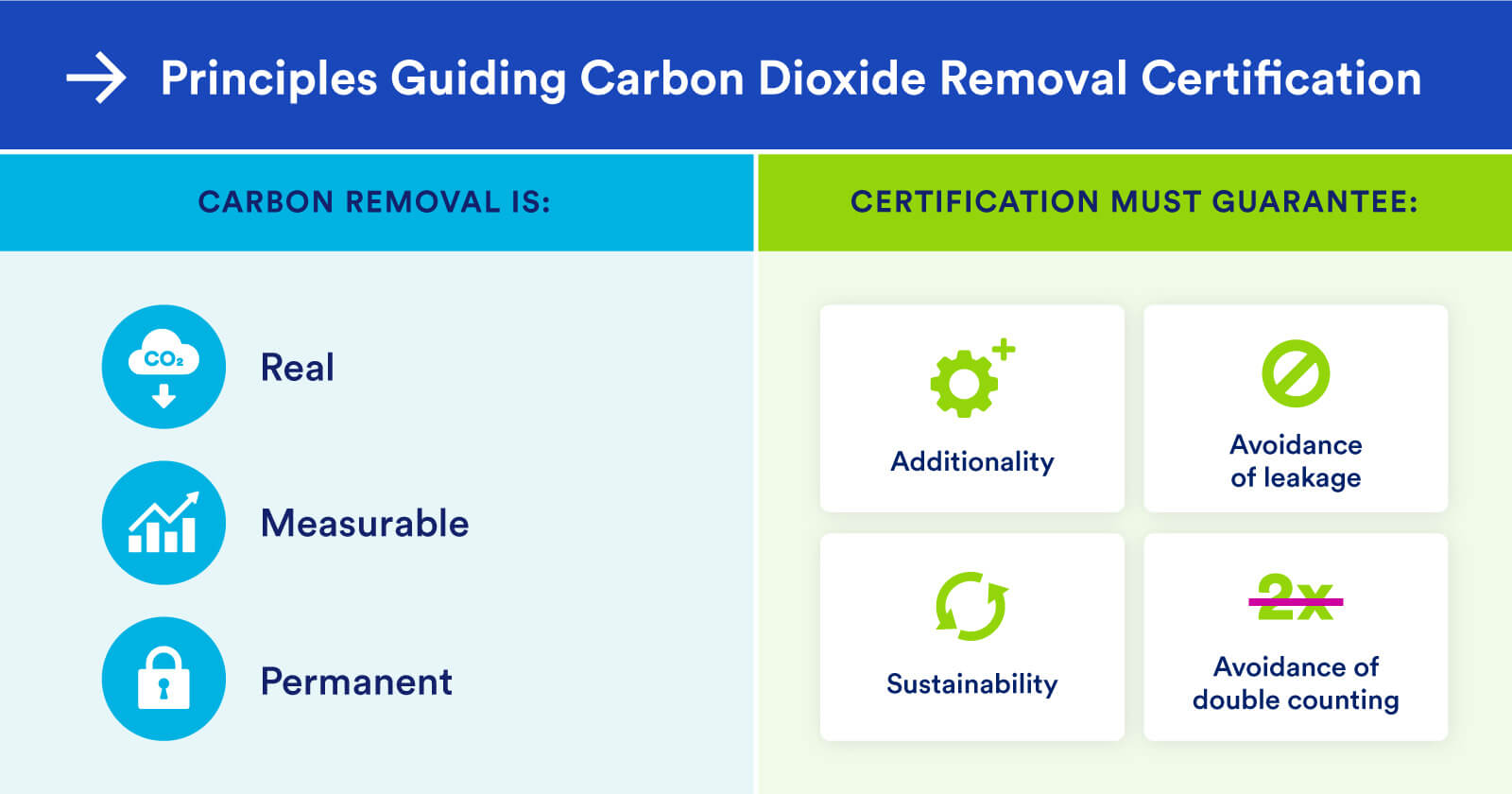EU pioneers carbon removals certification: Key recommendations and principles


· 6 min read
Doubling down on its global climate leadership, the European Union (EU) is pioneering a certification mechanism for carbon dioxide removals (CDR). While policymakers must continue to focus on rapid, near-term reduction of emissions, it has become abundantly clear that the world will need to draw large amounts of carbon dioxide out of the atmosphere through CDR. While several EU Member States have already begun developing policies to support CDR, gaps remain at the EU level. With the forthcoming certification mechanism, the EU has the unique opportunity to safeguard CDR’s climate value by setting a global standard for other countries to follow.
The latest report from Working Group III of the Intergovernmental Panel on Climate Change (IPCC) confirms CDR is an essential tool in the climate toolbox. In fact, even if the world succeeds at dramatically cutting emissions in the near-term, we are still expected to need hundreds of gigatonnes of CDR cumulatively by the end of the century. The IPCC highlights that CDR can help reduce net emissions in the near-term, counterbalance residual emissions, and achieve and sustain net-negative emissions in the long-term.
But for CDR to fulfill these roles in climate mitigation, it must be rigorously measured, well-governed, and scaled-up through dedicated incentive regimes. Currently, there are no widely accepted standards for CDR certification and existing informal rules are driven by private initiatives. The absence of regulation creates substantial risks for the environment and for consumer protection, as many CO2 removal claims often lack methodological or technical transparency as well as comparability. Furthermore, regulatory intervention is needed to safeguard the climate benefits of scaling permanent CDR. By introducing much-needed clarity, the EU’s certification mechanism is poised to lay the foundation for responsible CDR deployment in Europe as part of the bloc’s path to climate neutrality. A rigorous certification mechanism would provide a strong signal of political support and would bolster public trust that CDR provides reliable climate benefits. Thus, the upcoming EU legislation should ensure that carbon removals certified under this mechanism are real, measurable, additional, permanent, do not result in leakage, and avoid double counting.
Carbon removal certification also presents an excellent opportunity for the EU to break the conventional fault lines between natural vs. technological CDR methods. This unhelpful dichotomy has not only failed to provide clarity on the quality of removals, but also distracts from the issue of permanence, creates confusion via various interpretations and divides stakeholders. The best way forward would be to emulate the IPCC’s approach and clearly categorize and certify CDR methods based on the removal process (e.g., land-based, ocean-based, geochemical, or chemical) and estimated timescale of carbon storage (e.g., decades to centuries, centuries to millennia, beyond ten thousand years). Carbon removal options shouldn’t be a question of picking favored technologies, but a question of the permanent removal of harmful emissions from our atmosphere.
A rigorous certification mechanism would also enable the incentivization of a substantial scaling-up of CDR methods in the EU to help achieve climate neutrality by 2050. Requiring robust monitoring, reporting, and verification as well as public disclosure of credits used in voluntary and compliance markets can help to avoid double-counting, thereby further building public trust and climate benefit alike.
The certification mechanism is also expected to guide the voluntary carbon market in the private sector. The role of the private sector in advancing CDR is growing, and the collaboration between the public and private sector will determine the success of the certification mechanism. It is therefore crucial to provide stakeholders with a clear indication of how the certification mechanism will apply to voluntary and compliance markets, and how this will evolve over the next decades.
CDR represents an essential suite of options for helping to address the climate crisis. If CDR is to fulfill its climate value, it must be stringently regulated with global standards to ensure quality and permanence. As it pioneers the CDR certification mechanism over the months ahead, the European Commission has an unparalleled responsibility to adopt the highest environmental standards, so that it can further bolster the EU’s credibility as a climate leader and provide a global gold standard for CDR certification.
In establishing the certification mechanism, it is essential that the Commission ensure the mechanism includes only methods which adhere to basic minimum principles for CDR.

The principles guiding Carbon Dioxide Removal Certification are:
This article is also published by the Clean Air Task Force. Energy Voices is a democratic space presenting the thoughts and opinions of leading Energy & Sustainability writers, their opinions do not necessarily represent those of illuminem.
Glen Jordan

Sustainable Lifestyle · Sustainable Living
illuminem briefings

Architecture · Carbon Capture & Storage
illuminem briefings

Labor Rights · Climate Change
Financial Times

Carbon Market · Public Governance
GB News

Carbon · Sustainable Mobility
The Independent

Effects · Climate Change